Food and cancer
Keywords:
Diet, disease, nutritionAbstract
Cancer is characterized by uncontrolled growth and metastasis of abnormal cells in the body. This condition presents without distinction of age, sex or race, reason why it is considered one of the pathologies that is shown more frequently in the world-wide population with high mortality rates. This disease is the second leading cause of death in developed countries. Its incidence increases with age, and the diet is responsible in at least 30% of cases. The risk is lower in populations with high consumption of vegetal origin food. In the world, reduced consumption of fruits and vegetables, as well as increased consumption of smoked foods, grilled and processed meats, nitrites and nitrates, have been associated with an increased risk.Author Biography
Ricardo Adolfo Parra Huertas, Universidad Pedagógica y Tecnológica de Colombia - Uptc
Msc, Facultad de Ciencias Básicas, Universidad Pedagógica y Tecnológica de Colombia - Uptc
References
CÁCERES, H., NENINGER, E., MENÉNDEZ, Y., & BARRETO, A. (2016). Intervención nutricional en el paciente con cáncer. Revista Cubana de Medicina, 55(1), 59-73.
FERRINI, K., GHELFI, F., MANNUCCI, R., & TITTA, L. (2015). Lifestyle, nutrition and breast cancer: facts and presumptions for consideration. Journal of human nutrition & food science, 2(4), 1-6.
GARCÍA, P., CAMPOS J., VERDUGO, A., IBAÑEZ, P., AGUAYO, P., & PEREIRA, L. (2012). Nutrición y cáncer. Nutrición hospitalaria suplementos, 5(1), 1732.
GARRETT, G., ELERA, G., KELLER, M., ROBINSON, R., & ONEIL, K. (2013). Bioactive foods in aging: the role in cancer prevention and treatment. Elsevier.
GRANADOS, M., QUILES, J., GIL, A., & RAMÍREZ, M. (2006). Lípidos de la dieta y cáncer. Nutrición hospitalaria, 21(2), 44-54.
HOWARD, G., TIDWELL, D., BRILEY, C., & HUNT, B. (2014). Vitamin D and Calcium Intakes of Participants with and without Cancer. Journal of Human Nutrition & food science, 2(5), 1-6.
MATOS, C., & CHAMBILLA, E. (2010). Importancia de la fibra dietética, sus propiedades funcionales en la alimentación humana y en la industria alimentaria. Revista de Investigación en Ciencia y Tecnología de los Alimentos, 1(1), 4-17.
MORA, E., MOSCHELLA, F., NAVARRO, D., REYES, E., & VARGAS, M. (2014). Dieta, estado nutricional y riesgo de cáncer. Archivos venezolanos de puericultura y pediatría, 7(4), 202-209.
ORTÍZ, V., & ARUQUIPA, D. (2014). Cáncer y alimentación. Revista de actualización clínica, 42, 2225-2229.
PÁRAMO, D., & SIERRA, F. (2005). Dieta, nutrición y cáncer gastrointestinal. Revista colombiana de gastroenterología, 20(3), 26-32.
ROBLES, F., SANZ, F., LÓPEZ, J., & BELTRÁN, A. (2005). Alimentación y cáncer. Revista especializada Geriátrica y Gerontología, 40(3), 184-194.
RUSSO, G., TEDESCO, I., SPAGNUOLO, C., & RUSSO, M. (2017). Review Antioxidant polyphenols in cancer treatment: Friend, foe or foil? Seminars in Cancer Biology, 5, 1-13.
SANCHO & MACH. (2015). Revisión. Efecto de los polifenoles del vino sobre la prevención del cáncer. Nutrición Hospitalaria, 31(2), 535-551.
TU, S., CHEN, L., & HO, Y. (2017). Review. An apple a day to prevent cancer formation: Reducing cancer risk with flavonoids. Journal of food and drug analysis, 25, 119-124.
YANG, C., LI, G., YANG, Z., GUAN, F., CHEN A., & JU, J. (2013). Cancer prevention by tocopherols and tea polyphenols. Cancer Letters, 334, 79-85.
FERRINI, K., GHELFI, F., MANNUCCI, R., & TITTA, L. (2015). Lifestyle, nutrition and breast cancer: facts and presumptions for consideration. Journal of human nutrition & food science, 2(4), 1-6.
GARCÍA, P., CAMPOS J., VERDUGO, A., IBAÑEZ, P., AGUAYO, P., & PEREIRA, L. (2012). Nutrición y cáncer. Nutrición hospitalaria suplementos, 5(1), 1732.
GARRETT, G., ELERA, G., KELLER, M., ROBINSON, R., & ONEIL, K. (2013). Bioactive foods in aging: the role in cancer prevention and treatment. Elsevier.
GRANADOS, M., QUILES, J., GIL, A., & RAMÍREZ, M. (2006). Lípidos de la dieta y cáncer. Nutrición hospitalaria, 21(2), 44-54.
HOWARD, G., TIDWELL, D., BRILEY, C., & HUNT, B. (2014). Vitamin D and Calcium Intakes of Participants with and without Cancer. Journal of Human Nutrition & food science, 2(5), 1-6.
MATOS, C., & CHAMBILLA, E. (2010). Importancia de la fibra dietética, sus propiedades funcionales en la alimentación humana y en la industria alimentaria. Revista de Investigación en Ciencia y Tecnología de los Alimentos, 1(1), 4-17.
MORA, E., MOSCHELLA, F., NAVARRO, D., REYES, E., & VARGAS, M. (2014). Dieta, estado nutricional y riesgo de cáncer. Archivos venezolanos de puericultura y pediatría, 7(4), 202-209.
ORTÍZ, V., & ARUQUIPA, D. (2014). Cáncer y alimentación. Revista de actualización clínica, 42, 2225-2229.
PÁRAMO, D., & SIERRA, F. (2005). Dieta, nutrición y cáncer gastrointestinal. Revista colombiana de gastroenterología, 20(3), 26-32.
ROBLES, F., SANZ, F., LÓPEZ, J., & BELTRÁN, A. (2005). Alimentación y cáncer. Revista especializada Geriátrica y Gerontología, 40(3), 184-194.
RUSSO, G., TEDESCO, I., SPAGNUOLO, C., & RUSSO, M. (2017). Review Antioxidant polyphenols in cancer treatment: Friend, foe or foil? Seminars in Cancer Biology, 5, 1-13.
SANCHO & MACH. (2015). Revisión. Efecto de los polifenoles del vino sobre la prevención del cáncer. Nutrición Hospitalaria, 31(2), 535-551.
TU, S., CHEN, L., & HO, Y. (2017). Review. An apple a day to prevent cancer formation: Reducing cancer risk with flavonoids. Journal of food and drug analysis, 25, 119-124.
YANG, C., LI, G., YANG, Z., GUAN, F., CHEN A., & JU, J. (2013). Cancer prevention by tocopherols and tea polyphenols. Cancer Letters, 334, 79-85.
How to Cite
Parra Huertas, R. A. (2017). Food and cancer. Cultura científica, (15), 32–39. Retrieved from https://revista.jdc.edu.co/index.php/Cult_cient/article/view/24
Downloads
Download data is not yet available.
Downloads
Published
2017-10-30
Issue
Section
Review article




